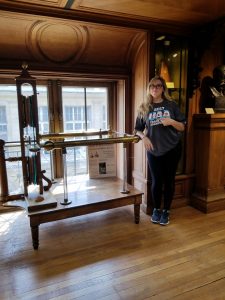
In the third week of the program we visited the Neandertal L’Expo. This museum had very interesting models. There were life-like figures of Neanderthals and realistic figures of brains from all different time periods. Since the beginning of time, our brains have been evolving. Our brains have been getting more specialized with increasing efficiency and ability. It was so interesting to understand how life differed back then and how we evolved from these people. We have learned about the evolution of the brain in many of our classes but it was so cool to actually see how these different brains created this different kind of lifestyle. It was interesting to be able to take a glimpse into what their life might have been like.










